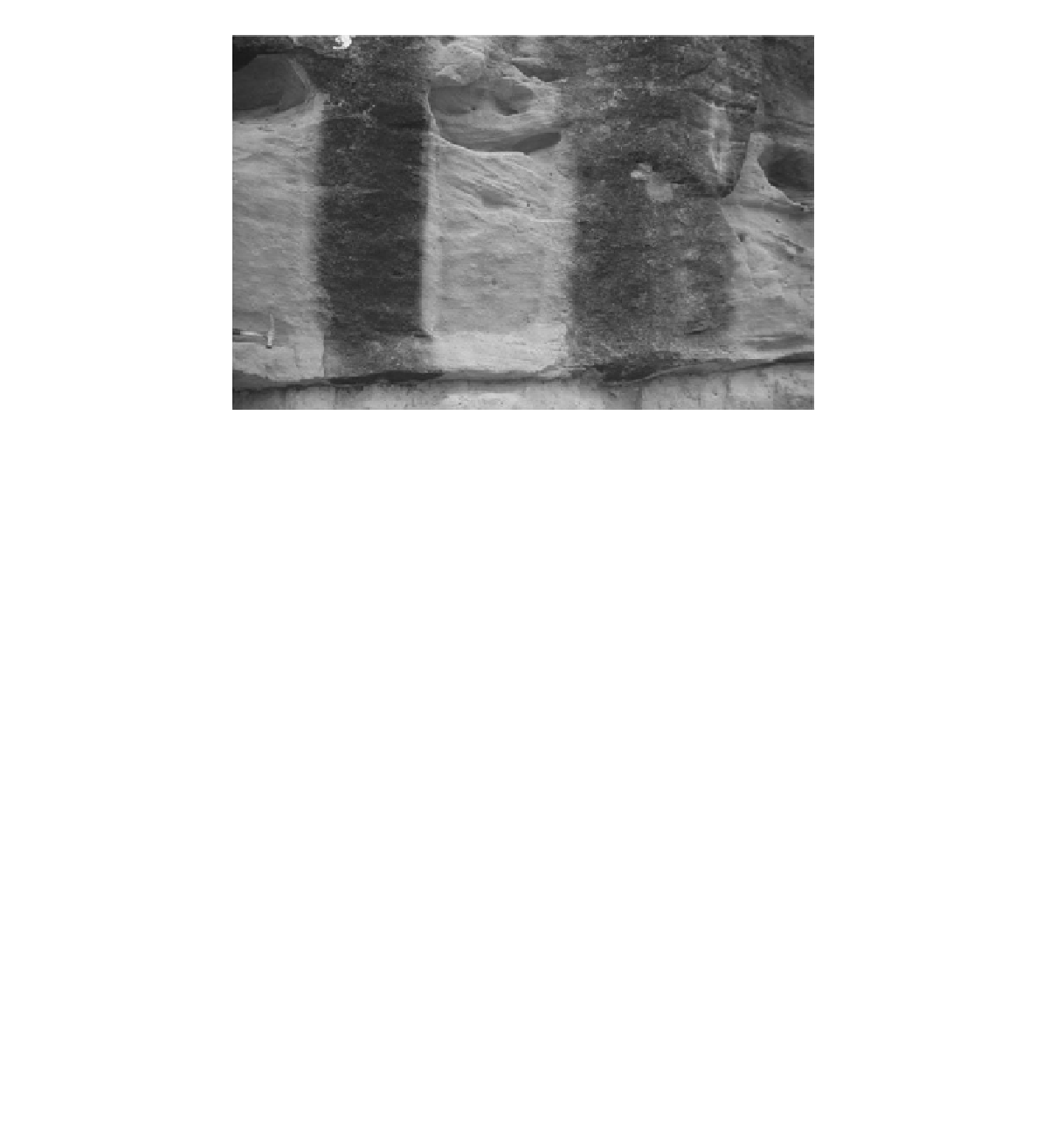Geoscience Reference
In-Depth Information
Figure 10.16
Biological crusts of fungi and cyanobacteria (black) affording protection to a sandstone rock slope (after Souza-
Egipsy
et al
., 2004).
is therefore likely to be an important process, but will be
highly episodic and may contribute to slower rates of slope
retreat. Seepage erosion will also serve to undermine the
overlying strata via processes of solution and fluvial ero-
sion, which is often evidenced by solution features, small
scour pits or flutes within the rock slope immediately
downslope of the seepage point.
lands or soil-mantled slopes discussed above. The form
of rock-mantled hillslopes is greatly dependent upon the
parent material that supplies the slope, although herein
slopes are only considered that lie on gradients less than
the angle of repose for this material. As mentioned above,
mantled slopes may occur as part of the continuum of hill-
slope that is dominated by bare rock slopes, or cuestas, in
its upper reaches, through to well-developed, soil-mantled
slopes in the floodplains or at the toe-slope locations. A
typical hillslope form may therefore be steep and convex
at the divide, grading into rectilinear and then concave at
the toe of the slope. As gradient changes (decreases) in a
downslope direction, it is common to see downslope fining
of the mantle, with coarser particles left in situ and finer
particles transported downslope due to fluvial erosion pro-
cesses. A detailed summary of the downslope fining that
is common on arid zone hillslopes is given in Parsons,
Abrahams and Howard (2009). Examples of distinctive
landforms on mantled slopes include: (1) talus (or scree)
embankments, (2) talus flatirons, (3) talus ledges and (4)
stone pavements. These features are discussed below in
terms of their typical form in arid zones, the dominant
processes that control these forms and the rates of slope
evolution that occur.
10.3.1.9
Evolution through time
Rates of slope-profile evolution are slow, when compared
with soil-mantled hillslopes. Episodes of erosion, which
move significant quantities of material, through rock fall,
for example, lead to maximum rates of slope retreat of ca.
0.1 m/a (Oberlander, 1997). Such data tend to be based on
the inference of stratigraphic surveys (e.g. Sancho
et al
.,
1988) and as such are highly variable estimates of the
long-term evolution of rock slopes.
10.3.2
Distinctive landforms of rock- and
debris-mantled slopes
Unlike their bare rock counterparts, mantled slopes may
be well protected from contemporary weathering pro-
cesses and thus may exhibit significantly different forms
and rates of evolution. Such slopes are mantled by a range
of materials, which exhibit different particle sizes and
often different parent materials as they may be sourced
from locations upslope at significant distances from their
10.3.2.1 Talus embankments
Talus embankments are formed when overlying caprock is
undermined and collapses onto a substrate ramp, covering
the underlying, weaker substrate and often protecting it

